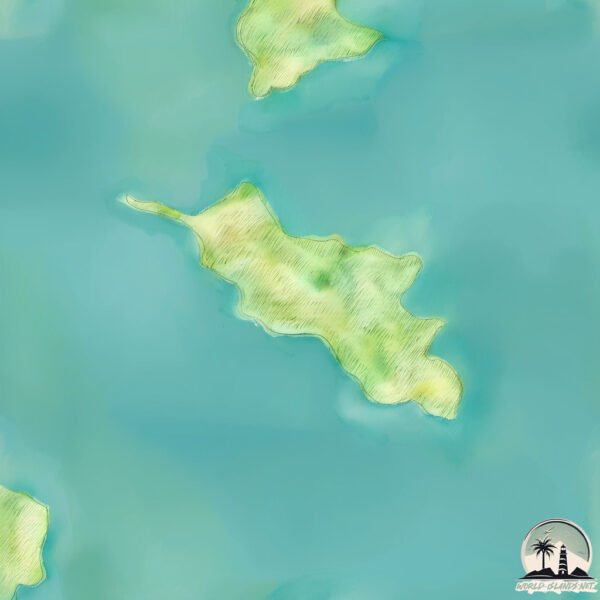Welcome to Bayley , a Tropical island in the Arafura Sea, part of the majestic Indian Ocean. This guide offers a comprehensive overview of what makes Bayley unique – from its geography and climate to its population, infrastructure, and beyond. Dive into the details:
Geography and size of Bayley
Size: 2.523 km²Coastline: 8.9 kmOcean: Indian OceanSea: Arafura SeaContinent: Oceania
Bayley is a Small Island spanning 2.5 km² with a coastline of 8.9 km.
Archipel: –
Tectonic Plate: Australia – A major tectonic plate covering Australia, New Zealand, and parts of the Indian and Pacific Oceans, known for its relative stability and occasional seismic activity.
The geographic heart of the island is pinpointed at these coordinates:
Climate and weather of Bayley
Climate Zone: TropicalClimate Details: Tropical Savanna, WetTemperature: Hot
Climate Characteristics: Defined by distinct wet and dry seasons with high temperatures year-round. Pronounced rainfall occurs during the wet season, while the dry season is marked by drought.
Topography and nature of Bayley
Timezone: UTC+10:00Timezone places: Australia/SydneyMax. Elevation: 4 m Mean Elevation: 2 mVegetation: WetlandTree Coverage: 30%
The mean elevation is 2 m. The highest elevation on the island reaches approximately 4 meters above sea level. The island is characterized by Plains: Flat, low-lying lands characterized by a maximum elevation of up to 200 meters. On islands, plains are typically coastal lowlands or central flat areas.
Dominating Vegetation: Wetland
Vegetation: 3 vegetation zones – Moderately Diverse Island
Infrastructure and Travelling to Bayley
Does the island have a public airport? no .
Does the island have a major port? no .
The mean population of Bayley is 0 per km². Bayley is Uninhabited. The island belongs to Australia .
Continuing your journey, Allen is the next notable island, situated merely km away.
We Investigated Staten Island’s Most Haunted Hospital – Bayley Seton
We Investigated Staten Island's Most Haunted Hospital – Bayley Seton
We Investigated Staten Island’s Most Haunted Hospital – Bayley Seton
We Investigated Staten Island's Most Haunted Hospital – Bayley Seton ...
We Investigated Staten Island's Most Haunted Hospital – Bayley Seton
What we uncovered inside will stay with us forever ...
Details emerge about Maine's first fatal shark attack
Details emerge about Maine's first fatal shark attack.
Details emerge about Maine's first fatal shark attack.
The Giant Stairs on Bailey's Island, A Hidden Treasure
This one can be hard to find. Proposed to my bride here, but before we ...
This one can be hard to find. Proposed to my bride here, but before we arrived I thought it was called Giant Steps... The best laid ...
Australia is classified as Developed region: nonG7: Developed economies outside of the Group of Seven, characterized by high income and advanced economic structures. The level of income is High income: OECD.
News – Latest Updates and Headlines from Bayley
Stay informed with the most recent news and important headlines from Bayley. Here’s a roundup of the latest developments.
Loading...
Please note: The data used here has been primarily extracted from satellite readings. Deviations from exact values may occur, particularly regarding the height of elevations and population density. Land area and coastline measurements refer to average values at mean high tide.

